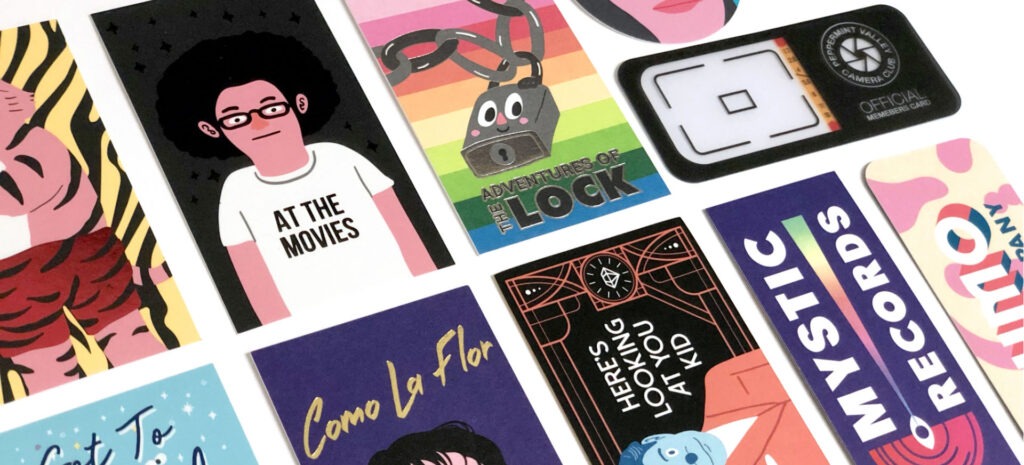
How to Design Business Cards for Creative Professionals
Blog AdminShare
In today's digital age, where networking and communication predominantly happen online, it's easy to overlook the significance of physical marketing materials. However, for creative professionals, having a well-designed business card is still essential. A strategically designed business card can make a lasting impression and serve as a tangible representation of your brand and talent. In this post, we will explore practical tips on how to design business cards that truly reflect your creativity and professionalism.
1. Begin with a Clear Vision of Your Brand
Before you start designing your business card, it's crucial to have a clear understanding of your brand identity. Consider the values and aesthetics that define you as a creative professional. Is your style minimalistic and elegant? Or vibrant and bold? Take business cards ideas from other professionals within your field, taking note of colors, fonts, and overall layouts that resonate with you.

(Source)
2. Choose the Right Color Palette
Color plays an instrumental role in communicating the essence of your brand. Consider using colors that align with the emotions associated with your niche or industry. For example, calming pastels may work well for artists or photographers focusing on nature-inspired work, while contrasting primary colors could highlight the vibrancy associated with graphic designers or fashion stylists.

(Source)
3. Typography Matters
Selecting appropriate fonts can have a significant impact on the effectiveness of your business card design. Strive for readability by choosing fonts that are both visually appealing and legible in different sizes. Experiment with font pairings by combining a sans-serif font for headlines or titles with a serif font for subheadings or body text. This can add an extra touch of sophistication to your design.

4. Language That Engages
The language used on your business card should be brief yet engaging. Your name and creative profession should take center stage, exuding confidence while representing you accurately. Be cautious not to clutter the space—make each word count. Besides essential information (name, contact details, website), consider including a tagline or a short description to capture attention further and create curiosity.
5. Experiment with Unique Shapes
While traditional rectangular business cards are undoubtedly popular, experimenting with unique shapes can help your card stand out from the rest. Sleek rounded corners or unconventional die-cut shapes can add a creative touch and leave a lasting impression on potential clients or collaborators.

(Source)
6. Harness the Power of Visuals
As a visual professional, incorporating relevant graphics or visuals into your business card can instantly convey your style and expertise. Consider integrating elements related to your field, such as photography, illustrations, or abstract designs that reflect your artistic flair.
7. Incorporate Texture and Dimension
Choosing an interesting texture or finish can elevate the overall feel of your business card. Experiment by selecting specialty papers with matte or glossy finishes that align with your brand aesthetics. Alternatively, opt for embossing, letterpress printing, and foil stamping techniques to add texture and dimension to specific elements of your design.

8. Consistency Across Branding Collaterals
Your business card should seamlessly blend in with your other branding materials, such as logos, websites, and social media profiles. Consistency is key when it comes to building an impactful brand identity. For example, the inclusion of the same fonts, colors, and overall style across all platforms represents professionalism and reliability. It ensures that every aspect of your brand conveys a cohesive message.

(Source)
9. Seek Professional Printing Services
After putting in hard work designing the perfect business card, it is essential to ensure that it turns out just as you envisioned it. Be sure to partner with professional printing services that have experience working specifically with creative professionals. They will understand the importance of color accuracy, paper quality, and finishing techniques. Seek recommendations from fellow professionals within your network or perform thorough research before settling for a printer.

10. Leave Room for Future Collaboration
Business cards are not limited to contact details. They can also serve as an opportunity for future collaborations. Consider incorporating space on your card to jot down a personal note or a specific service you discussed with the recipient. This small gesture can leave a lasting impression and open doors for potential partnerships or projects.

(Source)
In Conclusion
Designing business cards for creative professionals requires careful consideration of brand identity, color palettes, typography, language usage, unique shapes, visuals, texture and dimension, consistency across branding collaterals, and professional printing services, leaving room for future collaboration. You can make a lasting impression on potential clients or collaborators by paying attention to these elements and creating a card that reflects your creativity and professionalism.


